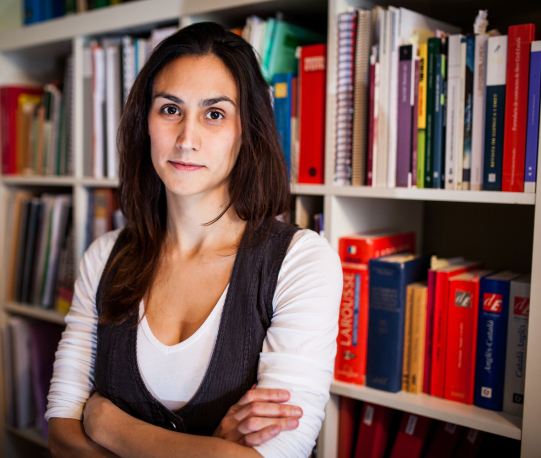Anna Arnall Duch
La presentació té com a objectiu donar a conèixer els resultats i les conclusions de la tesi doctoral «Llenguatge jurídic català: estat de la qüestió i propostes de futur», la qual, partint del fet que el llenguatge jurídic català (LJC) viu una etapa d’estancament a causa del poc ús que se’n fa, el retrocés en el marc jurídic i la perduració dels obstacles que n’impedeixen el desenvolupament, busca contribuir a millorar la situació d’aquest llenguatge mitjançant l’elaboració d’una bateria d’actuacions. Aquesta bateria està dissenyada a partir dels resultats de cinc estudis sobre el LJC fets des de les perspectives de la variació terminològica, la història, els recursos, el model lingüístic i l’ús. Per aconseguir-ho, la tesi combina contribucions teòriques i metodològiques diverses procedents del camp de la traducció jurídica, la terminologia, les ciències de la documentació i també la sociolingüística. Les principials aportacions del treball són la proposta d’una nomenclatura de referència per designar el LJC; una descripció de la història del LJC dividida en nou etapes que posa en relació estudis publicats de forma separada i que exposats conjuntament permeten copsar l’evolució d’aquest tecnolecte; una descripció global del panorama de recursos del LJC i la creació d’un catàleg de recursos que deixen en evidència els problemes de dispersió, redundància, disfuncionalitat i inestabilitat d’aquests recursos; la constatació que, a pesar que el LJC gaudeixi d’una codificació sòlida en diversos sectors de tot el domini lingüístic català, la implantació del seu ús a l’àmbit privat encara no ha reeixit, i una bateria de propostes d’actuació tangibles i implementables en diferents plans de treball d’organismes amb competències en planificació lingüística que posen l’accent a resoldre les mancances detectades en la difusió i la implantació d’aquest tecnolecte.
Paraules clau: llenguatge jurídic català, model lingüístic, implantació lingüística, història, llenguatges d’especialitat, variació terminològica, planificació lingüística, terminologia jurídica.

Anna Arnall Duch és llicenciada en Traducció i Interpretació i doctora en Lingüística per la Universitat Pompeu Fabra, amb una tesi doctoral centrada en el llenguatge jurídic català. Treballa com a traductora jurada i correctora de textos jurídics des de fa més de deu anys, i també fa docència sobre llenguatge i traducció jurídica a la UOC, a la UPF i en diferents col·legis d’advocats. Ha estat editora tècnica de la Revista de Llengua i Dret i col·labora amb el Servei Lingüístic del Consell de l’Advocacia Catalana.